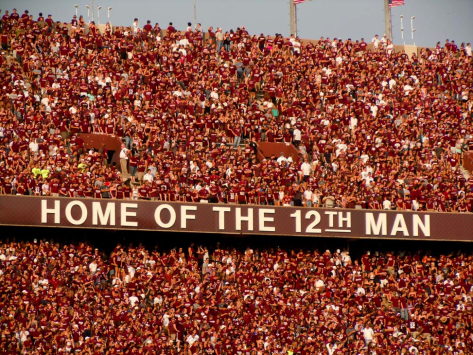
Sporting clubs refer to their customers as fans. This is an appropriate term because “fan” is shortened from “fanatic.” Successful sporting teams have fanatical supporters who are typically lifelong supporters of their sporting club and team.
Take the Seattle Seahawks, a professional American football franchise playing in the National Football League (NFL). Seahawks fans have been referred to collectively as the “12th Man” representing such a supportive force for their team that it is like having an extra man on the field. The Seahawks’ fans have twice set the Guinness World Record for the loudest crowd noise at a sporting event, first on September 15, 2013, registering 136.6 decibels during a home game and again on December 2, 2013, during a night home game with a then record-setting 137.6 decibels. This has occurred, in part, by customer-centric design because their new home stadium was purpose built so that fans would be closer to the field of play than in other stadiums and could urge their team on with such noisy enthusiasm that the opposing team could not hear the “plays” being called. This was a competitive advantage that resulted in almost all home games being won by the Seahawks in the last couple of years.
In 2014, the Seahawks won their first Super Bowl Championship, defeating Denver 43-8. More than 600,000 people turned up for the post match celebration in Seattle – about the number of its total population. The following season, Seattle advanced to Super Bowl XLIX, their second consecutive Super Bowl, but they were narrowly beaten by the New England Patriots by a score of 28-24. This kind of fan support is planned and nurtured by the Seahawks senior leadership, management, coaches and players with a special stand in the stadium named as the 12th Man, special events for fans and online connection that is devoted to engaging fans with the team and the club. This type of support occurs because the fans are at the center of thinking and decision-making.
Imagine if your customers were like the Seahawks’ fans – vocal, loyal advocates that are fans for life. How would that affect your bottom line? How would it affect your staff engagement? The answer is obvious – it would affect both very positively and create sustainable profitable growth.
But to do it you must have a customer-centric culture that focuses on creating superior value for your customers and puts long term customer relationships ahead of short term profit. Like in successful sporting franchises, everyone in your business has a vital role to play in creating and delivering value for your customers.
This article was syndicated from Business 2 Community: What Sports Can Teach Us About Customer Centricity
More Sales & Marketing articles from Business 2 Community:




